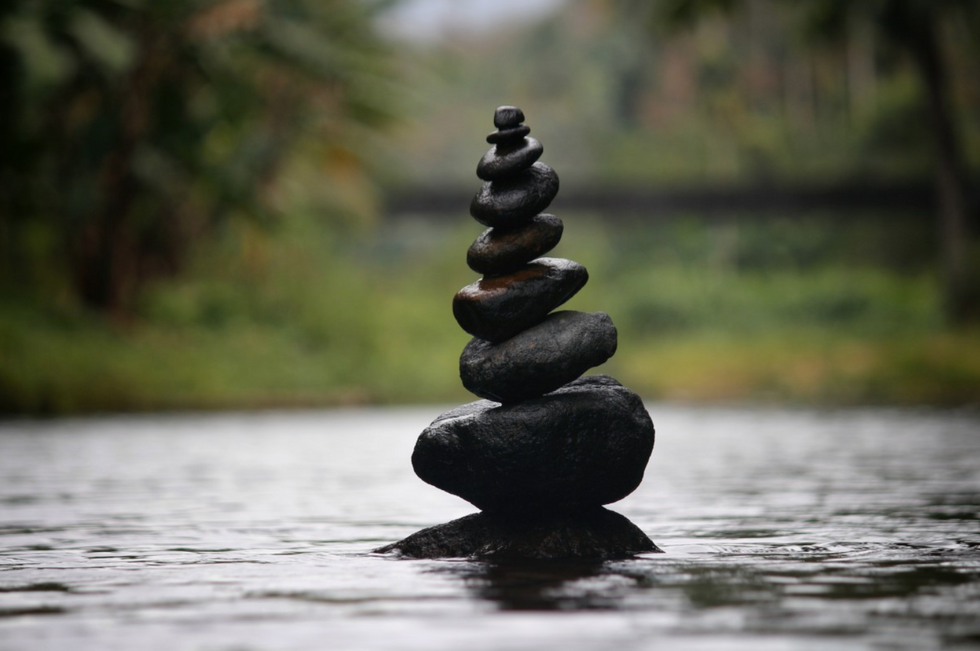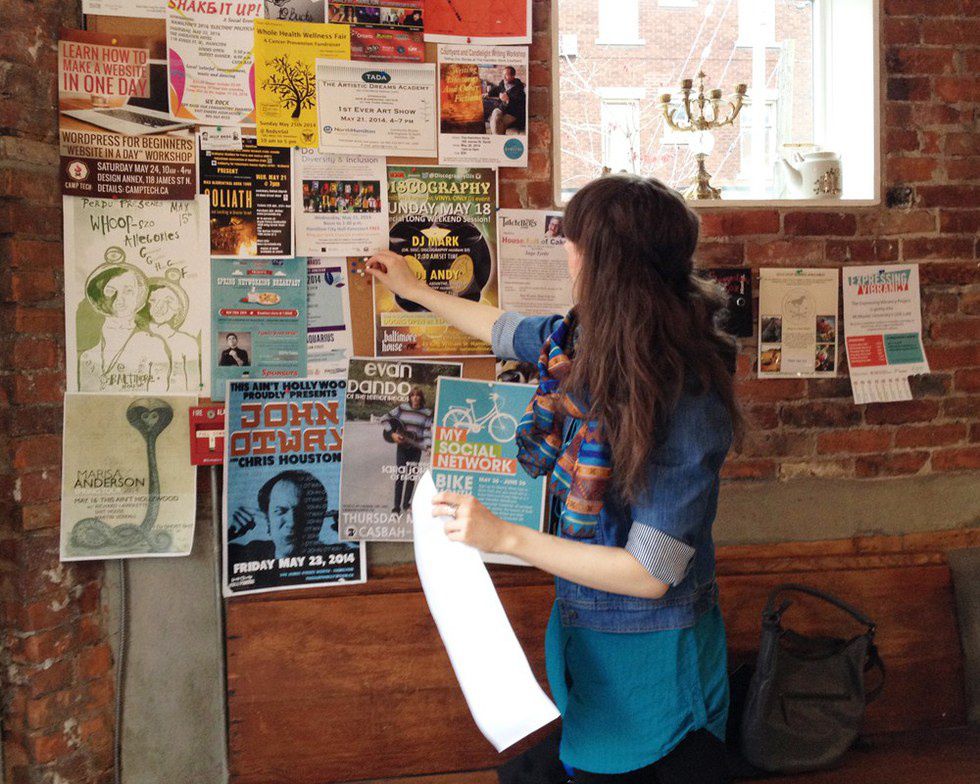In my opinion, the coolest way to influence the public is through art. I find art to be a powerful and impactful way for an artist to make a statement; one regarding identity, politics, or any opinion they might hold. Recently, I've discovered a few artists using their talent to benefit the environmental movement. These artists can appeal to a large audience aesthetically, and the people are often more likely to be moved by the art than they would be an article or some other unemotional publication of information.
Artists have been depicting nature's beauty in their art since the rise of the Hudson River School, but it is becoming more frequent for artists to incorporate a message about our current climate situation and the role that we as individuals play in the grand scheme of things. Here are some of my favorite examples of this kind of creative activism.
Chris Jordan.
Chris Jordan is known for his film about the plastic found in albatross populations on Midway Island, which has been an eye-opening project from the start. Although that documentary brought about Jordan's fame in the environmental community, check out his website to see the numerous other pieces of art he creates.
Agnes Denes.
Agnes Denes is well known primarily for her work "Wheatfield - A Confrontation." Denes works with a wide range of mediums, but this piece exhibits a relationship between nature and suburbia: a landfill covered with wheat in Manhattan. Her work often sparks self-reflection, and this case in particular questions the effects of humans on our environment.
Edith Meusnier.
Edith Meusnier is a French artist who utilizes textiles as a means of questioning sustainability and the environmental impacts of the textile industry. Her pieces are installed around cities and urban areas or among nature. Exposed to the elements and varying in color and texture, her work is mesmerizing. See more on her website.
Nils-Udo.
Nils-Udo stretches the boundaries of creativity with his ephemeral art. Each piece is devised entirely from natural, found elements. His work connects the history of the land to the present, and the almost surreal effect of each creation leads the viewer to appreciate their natural surroundings.
Andy Goldsworthy.
Another ephemeral artist, Andy Goldsworthy documents the changing states of nature with his art. Often working with snow or water, Goldsworthy has to perfect his timing to create the desired effect. His work is beautiful and thought-provoking, serving as a wonderful reminder of the fragility of our world.
Benjamin Von Wong.
Benjamin Von Wong is one truly ingenious photographer, placing more value on his work than just an aesthetic factor. Some of my favorite of his works are made up of plastics, textiles, and electronics thrown out by humans. Not only does this question our practices of production and consumption, but it also expresses the unthinkable amount of waste we produce.
Art Wolfe.
Art Wolfe is an incredible photographer whose work has always been influenced by his love of the environment. His work can be categorized as "conservation photography," a huge benefit to the environmental movement and truly inspiring to his viewers.
Chris Burkard.
Chris Burkard is another amazing nature photographer who often speaks on the topic of preservation. His journeys around the world are cataloged by his work, found on his website. He's even given a TED talk!
Ian Shive.
Ian Shive is known for his documentation of America's national parks. He has worked with numerous environmental organizations and even won awards for his conservation photography. Shive's work opens the eyes of those who haven't seen the world or the beauty existing around us.
Frans Lanting.
Frans Lanting is most well-known for his work for National Geographic. His photography promotes conservation efforts by capturing wildlife and the natural world on almost every continent. Browsing his website, your appreciation for nature is bound to grow.
Pascale Marthine Tayou.
Featured in this New York Times article, Pascale Marthine Tayou is an amazing artist who uses a wide range of mediums to comment on a wide range of issues. Many of his pieces, though, feature colorful plastic bags, noting the prevalence of plastic in nature and its ability to seemingly take over and suffocate our environment.
Gregg Segal.
Gregg Segal hits the nail on the head with his environmental photography project titled "7 Days of Garbage." This series highlights not only how much waste humans produce, but also how ignorant we are about our doing so. Segal's work contributes to environmental movements such as #zerowaste.
Bernard Pras.
Bernard Pras' unique form of art using 3D plastic objects grew from the discovery that paint and plastic share some ingredients. His art is, therefore, an example of anamorphosis: the attachment of objects, in this case, found plastic objects, onto a canvas in the shape of a recognizable image.
John Dahlsen.
John Dahlsen's environmental art is incredibly forward thinking. Like the piece above, many of his works represent waste created by humans, such as the Pacific Garbage Patch and scenes depicting beaches strewn with litter.
These artists, and many more take activism to the next level with their beautiful, creative pieces of art that directly comment on the state of the environment and the importance of its preservation.
- Environmental art – Art Term | Tate ›
- Nine Artists Leading the Discussion on Climate Change - Artsy ›
- 9 Artists Changing the Way We Think About the Environment | Art for ... ›
- Environmental Art ›
- Environmental Art Movement Overview | TheArtStory ›
- 18 Green Artists Who Are Making Climate Change And ... ›
- 6 Innovating Artists of the Environmental Art Movement ›
- 7 Environmental Artists Fighting for Change | Widewalls ›
- ENVIRONMENTAL ARTISTS ›














